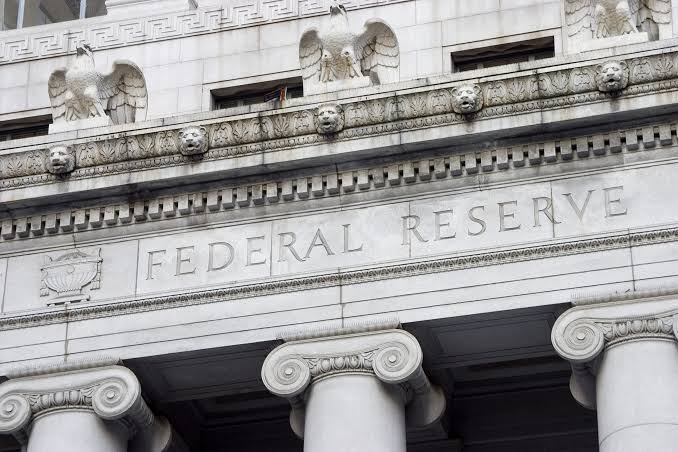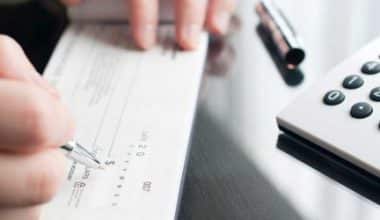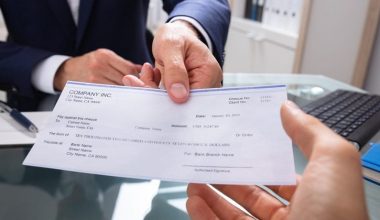The Federal Reserve, often referred to as “the Fed,” is the most powerful economic institution in the United States. It plays a significant role in the country’s economy. Established in 1913, the Fed serves as the central bank of the United States, but what exactly does the Federal Reserve do? In this article, we discuss the functions and responsibilities of the Federal Reserve and what it does during a recession. Understanding the role of the Fed is essential for comprehending the intricacies of the U.S. financial system and its impact on national and global economies. So, let’s dive in!
What Does The Federal Reserve Do?
The Federal Reserve, or the Fed plays several crucial roles in the U.S. economy. First and foremost, it serves as the central bank of the United States, responsible for the country’s monetary policy. The Federal Reserve sets interest rates and uses various monetary tools to stabilize prices, promote full job, and maintain the financial system. Through its control, the Fed influences overall economic activity and inflation.
Another key role of the Federal Reserve is overseeing the nation’s banking system. It acts as a regulator and supervisor of banks and financial institutions, ensuring their safety and soundness. Meanwhile, the Fed establishes and enforces regulations to maintain the stability and integrity of the banking industry, while also protecting the consumer’s rights.
Additionally, it provides various banking services to depository firms, such as processing electronic payments and maintaining the payment system. Overall, the Federal Reserve plays a critical role in safeguarding the effectiveness of the U.S. economy and financial sector.
What Does The Federal Reserve Do During A Recession?
During a recession, the Federal Reserve takes several measures to stabilize the economy and mitigate the impact of the economic downturn.
One of the primary actions the Federal Reserve takes during a recession is expansionary monetary policy implementation. This involves lowering interest rates and increasing the money supply through various mechanisms, such as open market operations and discount window lending. Hence, these measures encourage borrowing and spending, stimulating economic activity and increasing liquidity in the financial system.
Additionally, the Federal Reserve also employs unconventional tools during a recession. One such tool is quantitative easing (QE). This is where the central bank buys government securities or other assets from the market, putting money into the economy. By doing so, the Fed aims to lower long-term interest rates and boost asset prices, hence stimulating investment and consumption.
Moreover, the central bank also engages in regulatory actions to support the financial system during a recession, acting as the lender of last resort during financial stress. This includes providing emergency liquidity facilities to money market mutual funds or implementing rules to ensure stability in the banking sector. In essence, the Federal Reserve plays a vital role in mitigating the impact of recessions and promoting economic recovery. It does all these through its various monetary policy measures and regulatory actions.
What Are The Six Major Jobs Of The Federal Reserve?
The six major jobs of the Federal Reserve are as follows:
#1. Acting As Government’s Fiscal Agent
Firstly, acting as the government’s fiscal agent is one of the Federal Reserve’s primary roles. This means that the Fed conducts financial transactions on behalf of the US Treasury. That’s processing payments, issuing and redeeming government securities, and managing the government’s cash balances. In addition, the Fed helps ensure the flow of funds and transactions within the economy and supports the financial system.
#2. Supervising Banks
Secondly, the Federal Reserve is responsible for supervising member banks. This includes overseeing their operations, evaluating their financial conditions, and ensuring their compliance with banking laws and regulations.
The Fed conducts regular examinations of member banks. This is to assess their safety and soundness, monitor risk management practices, and promote the banking system. By supervising member banks, the Fed protects the integrity and resilience of the US banking sector, thus contributing to the overall financial stability.
#3. Regulate Money Supply
Additionally, one of the primary duties of the Fed is to regulate the money supply. Through its monetary policy tools, the Fed influences the amount of money circulating in the economy. By doing this, it aims to control inflation, promote economic growth, and maintain price stability.
#4. Supply Paper Currency
The Federal Reserve is in charge of printing and distributing paper currency. By overseeing the production and circulation of money, the Fed safeguards the currency and maintains public confidence in its value. This responsibility allows the Fed to control the money supply and implement monetary policies to regulate inflation and support economic growth.
#5. Clearing Checks
Another important job of the Federal Reserve is clearing checks. With the increasing checks usage as a means of payment, it’s essential to ensure smooth and secure processing. To achieve this, the Federal Reserve acts as a clearinghouse for checks, where it collects and settles the funds between banks.
Through this process, the Fed facilitates the money transfer between financial institutions. It ensures checks are honored, and funds move efficiently from one account to another. This function not only improves banking system stability but also enables seamless transactions and reduces the risk of fraud or any disruptions in the payment system.
#6. Setting Reserve Requirements
The sixth major job of the Federal Reserve is setting reserve requirements. Reserve requirements refer to the minimum amount of funds banks can hold in reserve against certain types of deposits. This requirement helps ensure banks have enough liquidity to meet their customers’ demands for cash withdrawals.
With this, the Federal Reserve can control the money circulating in the economy. For instance, if the requirements increase, banks will have less money to lend, leading to a decrease in borrowing and spending. On the other hand, if the requirements decrease, banks will have more funds to lend, stimulating economic growth. Thus, the Fed uses reserve requirements to manage the money supply and stabilize the economy.
What Are The Three Main Functions Of The Federal Reserve System?
The Fed plays a crucial role in the United States economy. It serves three main functions important for the stability and proper functioning of the country’s financial system.
- Firstly, the Fed acts as the central bank of the United States. That’s it oversees and regulates the nation’s banking system. It supervises and conducts examinations of banks to ensure their safety and soundness, implements monetary policies to control inflation and interest rates, and provides banking services.
- Secondly, it controls the country’s money supply. By setting reserve requirements and manipulating interest rates, the Fed manages and regulates cash circulation. Meanwhile, this function helps to stabilize prices and control inflation, as well as influences economic growth by stimulating or slowing down borrowing and spending.
- Lastly, the Federal Reserve System serves as a lender of last resort. In times of financial crises or liquidity shortages, the Fed provides emergency funding to banks and other financial institutions, thereby preventing systemic disruptions and maintaining stability in the financial system. This function is crucial for protecting the overall health and functioning of the economy, especially during times of significant economic stress or uncertainty.
Who Controls The Fed?
The Board of Governors, consisting of seven members appointed by the President and confirmed by the Senate, forms the system governing body. The Chairperson of the Board, also known as the Chairman of the Fed, holds significant influence over the direction of monetary policy. While the President has the power to nominate individuals for these positions, the independence of the central bank is greatly preserved, allowing it to act in the economy’s best interest rather than being subjected to political pressure.
How Does The Federal Reserve Make Money?
One of the main ways the Federal Reserve makes money is through interest income. The Fed holds a vast portfolio of securities, including Treasury bonds and mortgage-backed securities, which generate interest payments. Then, these interest payments are to cover expenses and also contribute to the Fed’s profits.
Additionally, the Fed earns income through fees and services provided to financial firms. For example, member banks pay membership fees, while the Fed also charges fees for services such as check clearance and electronic fund transfers.
Another source of income is the interest from loans. In times of financial stress, the Fed may lend money to banks and other financial institutions through programs like the discount window. Then, the interest on these loans adds to the income of the Fed. Moreover, the Fed earns money through investments in foreign currencies and gold, generating profits if the value of the currencies or gold appreciates over time.
In a nutshell, the Federal Reserve relies on a combination of interest income, fees from services, interest on loans, and investments to make money and fulfill its role in the economy.
What Do Each Of The Federal Reserve Banks Do?
The Federal Reserve System consists of twelve regional banks, known as Federal Reserve banks. They’re responsible for implementing monetary policy and regulating the financial system in their various regions. Each Federal Reserve bank operates independently but works with the others to ensure the effective functioning of the overall system.
Who Owns The 12 Banks Of The Federal Reserve?
The ownership of the 12 banks of the Federal Reserve is unique. Unlike traditional banks, the Federal Reserve banks are not privately owned by individuals or corporations. Instead, they are owned by member banks, which are commercial banks that are part of the Federal Reserve System. However, these member banks must join the Federal Reserve System if they meet certain criteria.
Who Prints Money In The US?
In the United States, the responsibility for printing money lies primarily with the Bureau of Engraving and Printing (BEP). It’s a branch of the United States Department of the Treasury. The BEP designs and produces paper currency, including Federal Reserve notes.
With its main production facilities in Washington, D.C., and Fort Worth, Texas, the BEP uses advanced printing techniques and security measures to ensure the integrity and authenticity of the currency. The BEP also collaborates closely with the Fed, which oversees the distribution and supply of money in the United States.
Although the BEP is responsible for physically printing the currency, the Federal Reserve System decides whether to create or destroy money.
Wrapping Up
The Federal Reserve plays a crucial role in the stability, security, and growth of the United States economy. Meanwhile, the Fed controls the money supply and interest rates, serves as a regulatory authority, and acts as a lender of last resort. Notwithstanding, the Federal Reserve’s multifaceted roles ensure a stable and well-functioning economy, ultimately benefiting the American public.






